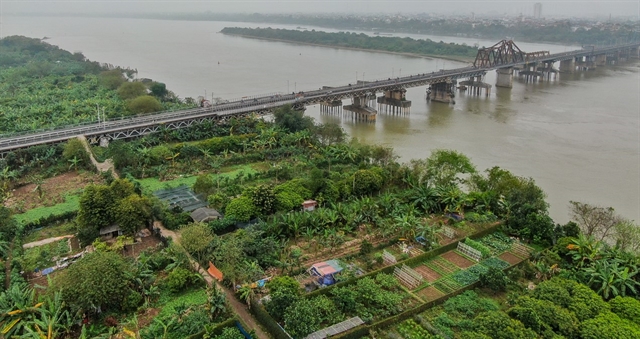 Economy
Economy


|
| Part of the Red River Delta. Photo baotintuc.vn |
HÀ NỘI — The uneven and unsustainable development of different economic sectors and localities is a bottleneck that is hindering the overall development of the Hồng (Red) River Delta.
A workshop was held in Nam Định Province on Tuesday to discuss the development of infrastructure and the marine economy in the Red River Delta by 2030, with a vision for 2045.
Participants said transport connections between economic corridors are still limited and marine spatial planning in the Red River Delta is still overlapping and contradictory. Meanwhile, logistics infrastructure is not synchronous.
In particular, limitations in regional linkage are affecting the development of every single locality and the whole Red River Delta, they said.
There is no official mechanism to facilitate regional linkage.
The activities of the localities in promoting regional linkages have only focused on enhancing exchanges, discussing policies, providing information and making common recommendations to the central government.
At the workshop, scientists, researchers, leaders of ministries, agencies and localities said that it is necessary to build, develop and complete regional infrastructure together, to create a premise to promote socio-economic development.
The region must focus on building and completing the transport network, marine spatial planning, development of energy, coastal industry, and logistics services, taking advantage of each locality to promote regional and inter-regional economic development.
Nguyễn Danh Huy, director of the Department of Planning and Investment (Ministry of Transport), said transport infrastructure plays an important role in socio-economic infrastructure and is one of three strategic breakthroughs.
In the future, provinces and cities in the Red River Delta region need to develop transport infrastructure step by step, ensuring the enhancement of the region's advantages, traffic safety, transport connectivity and logistics.
Associate Professor Dr Trần Đình Thiên, former director of the Việt Nam Institute of Economics, said the Ministry of Planning and Investment must coordinate with other provinces and cities in the region to evaluate conditions and the region's potential and advantages, to implement an appropriate regional master plan.
Regarding marine economic development in the Red River Delta by 2030 with a vision to 2045, Dr Nguyễn Anh Tuấn, from the Institute of Sea and Island Research, said it should be based on the advantages of natural conditions and the need for harmony between conservation and development.
Deputy Head of the Central Economic Commission Nguyễn Duy Hưng said provinces and cities in the region need to promote regional and inter-regional linkages and complete infrastructure and marine economy.
Localities also need to soon complete and promulgate mechanisms and policies to create momentum for socio-economic development, paying attention to developing the digital economy and applying science and technology, reforming the administrative procedures, and attracting investment.
The Red River Delta region consists 11 cities and provinces, namely Hà Nội, Vĩnh Phúc, Bắc Ninh, Quảng Ninh, Hải Dương, Hải Phòng, Hưng Yên, Thái Bình, Hà Nam, Nam Định and Ninh Bình.
The region's economic growth rate in the 2011-20 period reached 8.02 per cent a year, with the total export value of the whole region increasing from US$50.2 billion in 2015 to $100.78 billion in 2020, with an average growth rate of 14.95 per cent a year. — VNS




